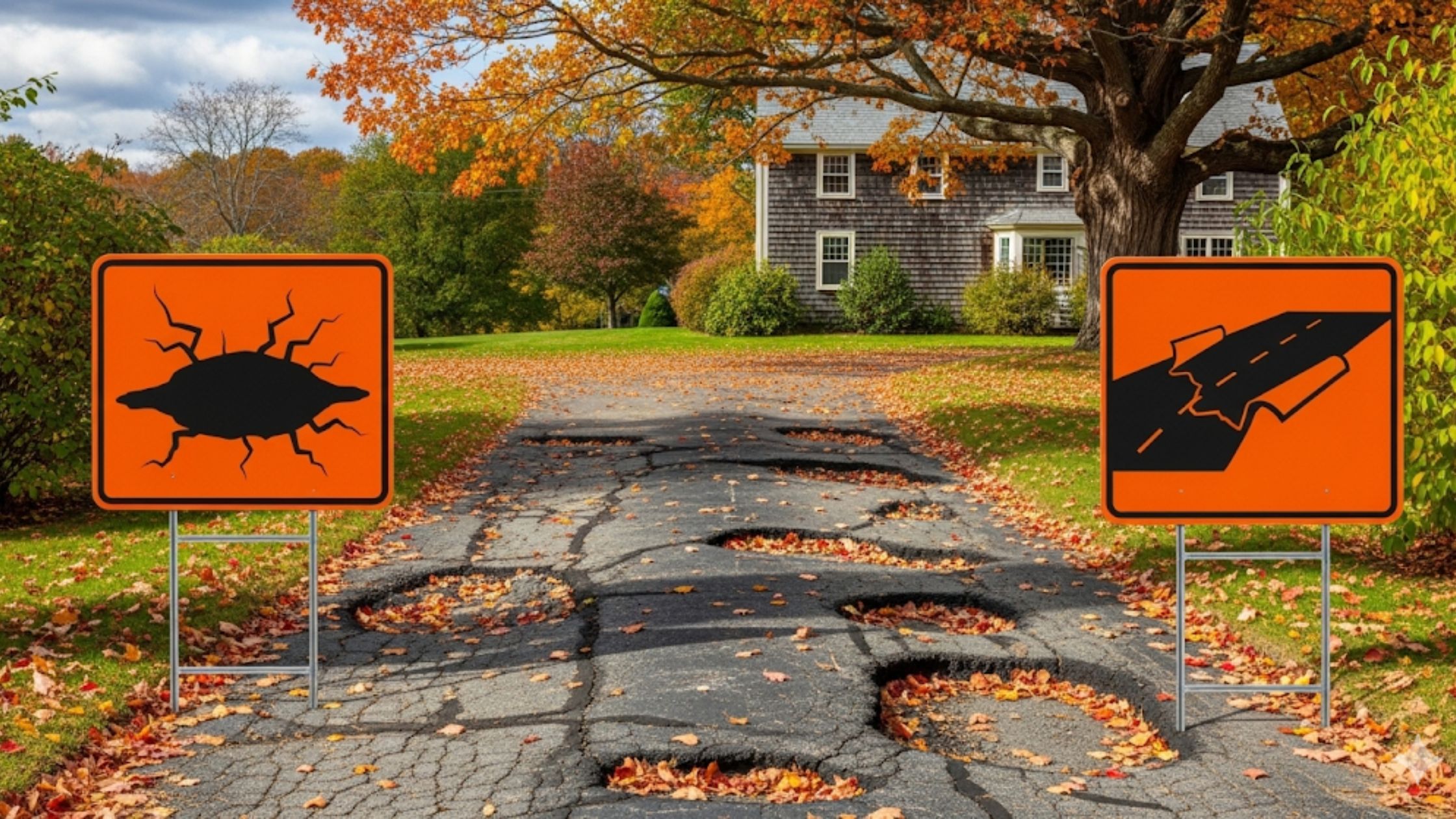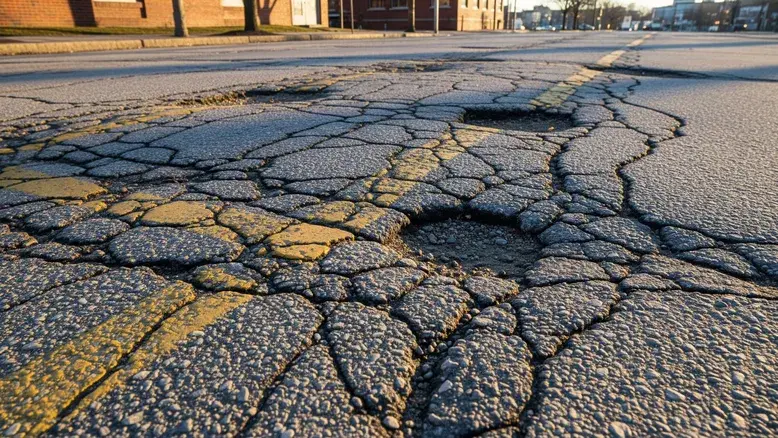Asphalt pavements in Massachusetts endure some of the most demanding conditions in the country—from spring thaw cycles and winter freeze-thaw damage to summer heat and heavy traffic loads. Over time, surface cracks develop, allowing water to infiltrate and weakening the underlying base. Timely crack filling acts as a frontline defense, sealing vulnerabilities, preventing pothole formation, and significantly extending pavement life. By integrating crack filling into a structured maintenance program, property owners and municipalities can optimize costs, enhance safety, and preserve curb appeal.
Understanding Asphalt Deterioration in Massachusetts Climate
Asphalt deterioration is a progressive process influenced by environmental stresses, material properties, and traffic demands. In Massachusetts, two factors stand out: freeze-thaw cycles and UV radiation.
Freeze-Thaw Cycles
Water seeps into hairline cracks during warmer weather. When temperatures drop below freezing, the trapped water expands by approximately 9%, exerting pressure on adjacent pavement and widening fissures. Repeated cycles lead to severe cracking, potholes, and base layer erosion.
UV Radiation and Oxidation
Solar UV rays break down asphalt binder molecules, causing the surface to become brittle and prone to cracking. Oxidation reduces flexibility, so asphalt cannot adapt to traffic loads without developing distress.
The Importance of Crack Filling for Asphalt Longevity
Timely crack filling addresses surface distress before it compromises structural integrity. It ranks among the most cost-effective maintenance treatments.
Prevention of Water Penetration
Filling cracks with a flexible sealant blocks moisture infiltration, safeguarding the subgrade and base from weakening. This prevents pothole formation and sub-surface washouts.
Cost-Effective Maintenance
Routine crack filling, performed every two to three years, costs a fraction of overlay or reconstruction. An investment of a few cents per linear foot can save hundreds of dollars per square foot in future rehabilitation.
Enhanced Safety and Aesthetics
Sealed pavements resist trip hazards, reduce vehicle damage, and present a visually uniform surface that enhances curb appeal. Well-maintained lots and driveways also lower slip-and-fall liability.
Types of Crack Filling Materials and Techniques
Selecting the correct material and application method is vital to the success of crack repair.
Hot-Pour vs. Cold-Pour Rubberized Asphalt
Hot-pour crack fillers, heated to 350°F–375°F, bond deeply within cracks and deliver flexible, long-lasting seals. Cold-pour options, while convenient for small projects, often lack the durability and adhesion of hot-pour systems.
Polymer-Modified Sealants
Advanced polymer-modified asphalt sealants offer superior elasticity, ranging from ‑20°F to 150°F without hardening. They accommodate pavement movement and guard against thermal expansion.
Epoxy Injection
For structural cracks in concrete pavement sections, low-viscosity epoxy injections restore tensile strength and prevent crack propagation. This technique is critical for heavily loaded areas like loading docks and airport runways.
concrete crack filler service in Massachusetts
Property owners seeking specialized support will find dedicated concrete crack filler service in Massachusetts that integrates professional-grade materials with precise surface preparation.
Best Practices for Crack Filling in Massachusetts
Effective crack repair follows a multi-step process to guarantee long-term performance.
1. Surface Preparation
Prior to filling, all cracks should be cleaned of debris, vegetation, and loose particles. High-pressure air blowing or wire-brushing helps ensure optimal sealant adhesion.
2. Crack Assessment and Routing
Determine crack width and depth. For cracks wider than ½ inch, routing to create a uniform reservoir provides better sealant retention. Hairline cracks under ¼ inch may only require a brush-in application.
3. Temperature and Weather Considerations
Optimal application temperatures range from 40°F to 90°F. Moisture presence or imminent rain can compromise bonding, so scheduling during dry weather is essential.
4. Application Technique
Using a pour pot, squeegee, or specialized melter-applicator, uniformly fill each crack slightly above pavement level. Strike off excess material for a flush finish, then allow adequate cure time—typically 24 to 48 hours.
Integrating Crack Filling into Pavement Maintenance Programs
A comprehensive pavement maintenance strategy includes crack filling as a key element, working in concert with sealcoating and overlay treatments.
Sealcoating Synergy
After crack filling, sealcoating provides a protective membrane that blocks UV damage and water intrusion. Together, these treatments can extend asphalt life by up to 50%.
Preventive Maintenance Scheduling
Implement a cyclical program: inspect pavements in spring, fill cracks in early summer, sealcoat in late summer or early fall, and re-assess in winter to address any freeze-thaw damage.
DIY vs. Professional Crack Filling
For small, low-traffic areas, do-it-yourself crack filling can be economical. However, professional services offer:
- Precise routing and cleaning technology.
- Industrial-strength hot-pour materials.
- Uniform application and longer warranties.
Consult the guide DIY vs. Professional Crack Filling to evaluate which approach suits your property’s needs.
Case Study: Municipal Pavement Maintenance in Greater Boston
In 2023, a mid-sized suburb of Boston executed a pavement preservation plan across 50 miles of residential streets. By allocating 20% of their pavement budget to crack filling and sealcoating:
- Average pavement condition index rose from 65 to 82.
- Reconstructed segments dropped by 30% over two years.
- Overall maintenance costs fell by 18% compared to similar towns.
Early crack management avoided costly full-depth repairs and improved road safety metrics.
Choosing the Right Service Provider in Massachusetts
Identifying a trusted contractor ensures quality results and peace of mind.
Licensing and Insurance
Verify Massachusetts construction license and liability policies. This protects you from on-site incidents and premature sealant failures.
Material Certifications
Look for sealants meeting ASTM D6690 (hot-applied) or ASTM D3405 (cold-poured). Certified products guarantee consistent performance.
Performance Warranties
Reputable firms back their work with warranties of 12 to 24 months, covering sealant adhesion and crack re-opening.
Local Expertise
Select a provider familiar with regional climate patterns—knowledge of freeze-thaw intensity and salt applications greatly influences material choice and application timing.
The Essential Guide to Asphalt Crack Filling
For in-depth technical insights, techniques, and material specifications, review The Essential Guide to Asphalt Crack Filling to empower your maintenance decisions.
Conclusion
In Massachusetts’ varied climate, proactive crack filling stands as a cornerstone of asphalt longevity. By sealing surface defects, property owners safeguard subgrade foundations, prevent pothole damage, and achieve significant lifecycle savings. Whether you opt for targeted DIY efforts or engage professionals, integrating crack repair into a cyclical maintenance schedule yields safer, smoother, and more attractive pavement.
For expert crack filling and complete pavement preservation services throughout Massachusetts, trust The SealCoating Guys to deliver proven materials, meticulous preparation, and lasting results.
Frequently Asked Questions
1. How often should asphalt cracks be filled in Massachusetts?
As a rule, inspect pavements annually in spring and fill visible cracks every two to three years. Severe freeze-thaw damage may necessitate additional treatments.
2. Can crack filling prevent potholes from forming?
Yes. Sealing cracks blocks water intrusion that leads to subgrade erosion and pothole development, cutting potential repair costs by up to 80%.
3. What is the difference between crack filling and crack sealing?
Crack filling involves routing and filling wider cracks with sealant, while crack sealing uses a band-aid overlay to expel moisture and accommodate movement in non-working (static) cracks.
4. When is the best time to perform crack filling in a New England climate?
Late spring through early fall, when temperatures remain above 40°F and pavements are dry, ensures optimal bonding and cure times before winter.
5. Is hot-pour or cold-pour sealant better for Massachusetts roads?
Hot-pour rubberized asphalt sealants provide superior flexibility, adhesion, and longevity under extreme temperature swings, making them the preferred choice for heavily trafficked and critical pavements






.webp)

.svg)



